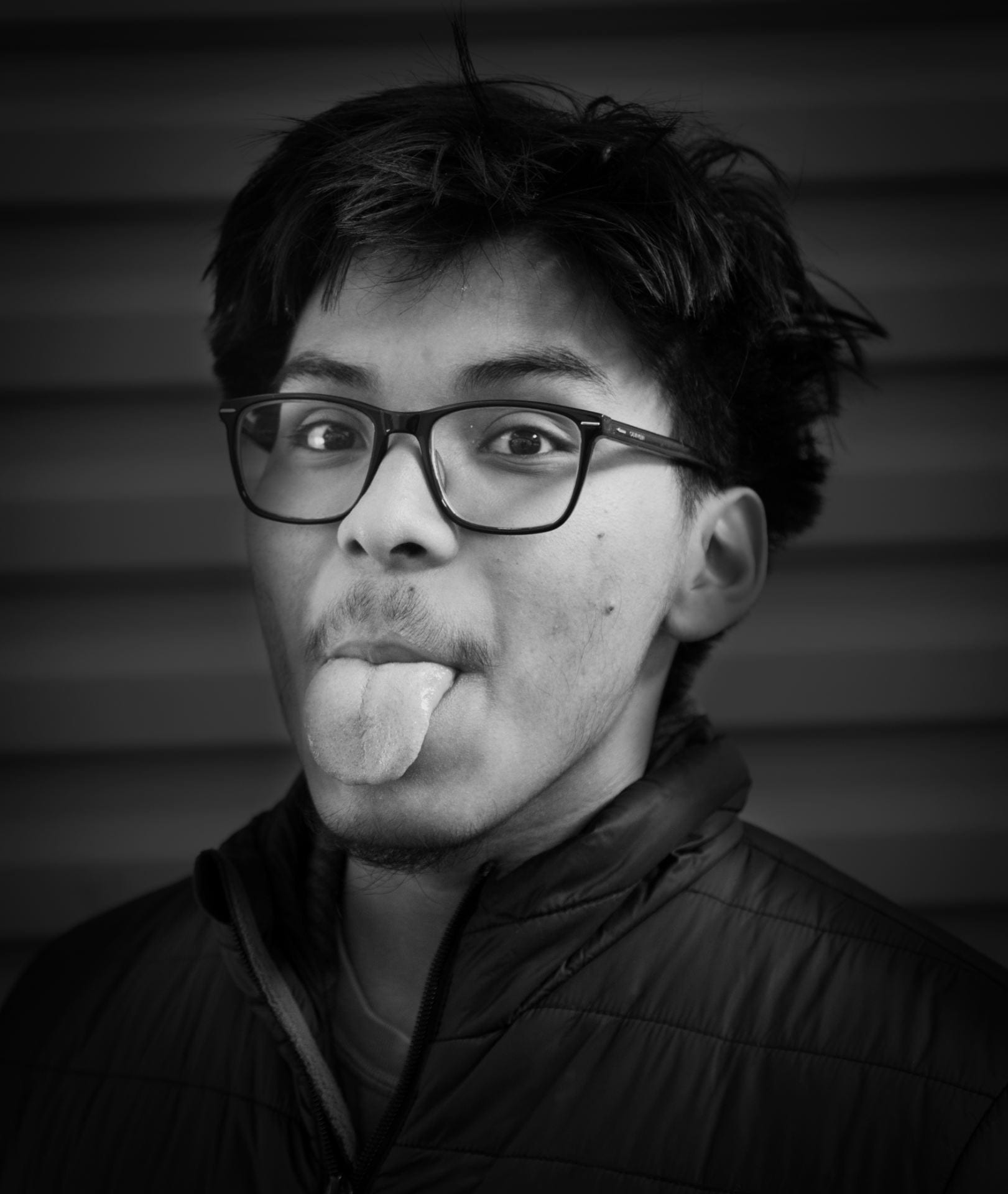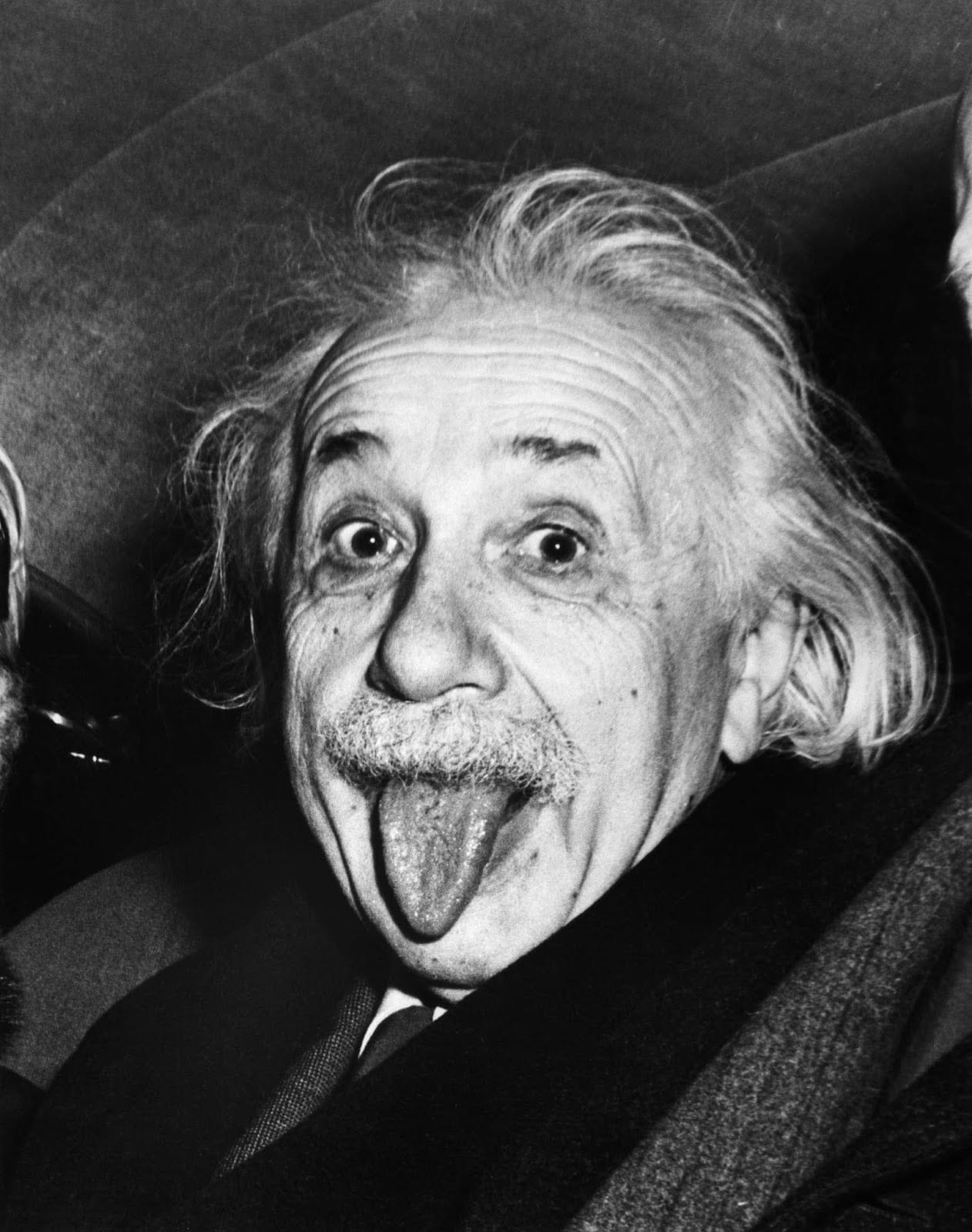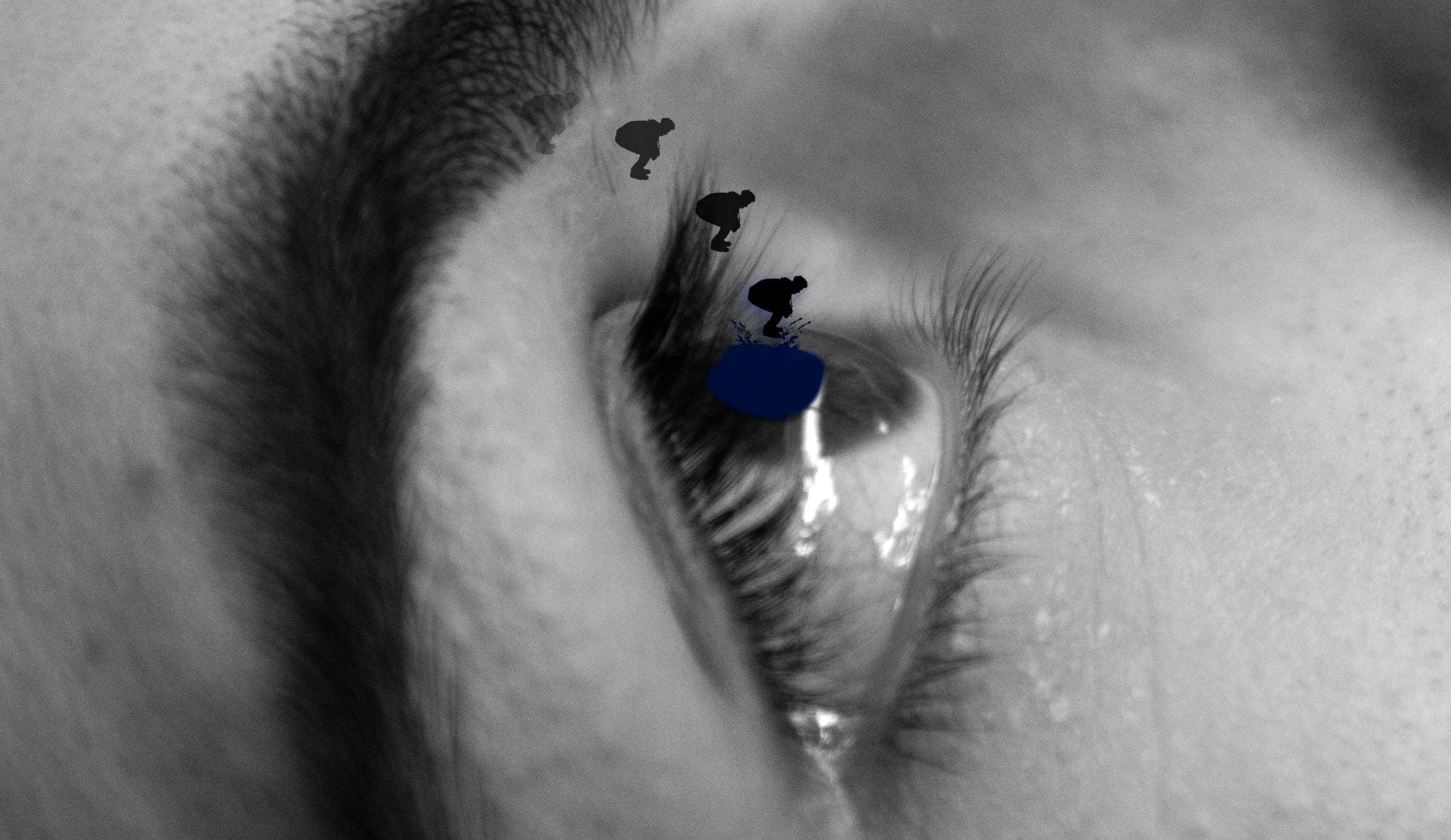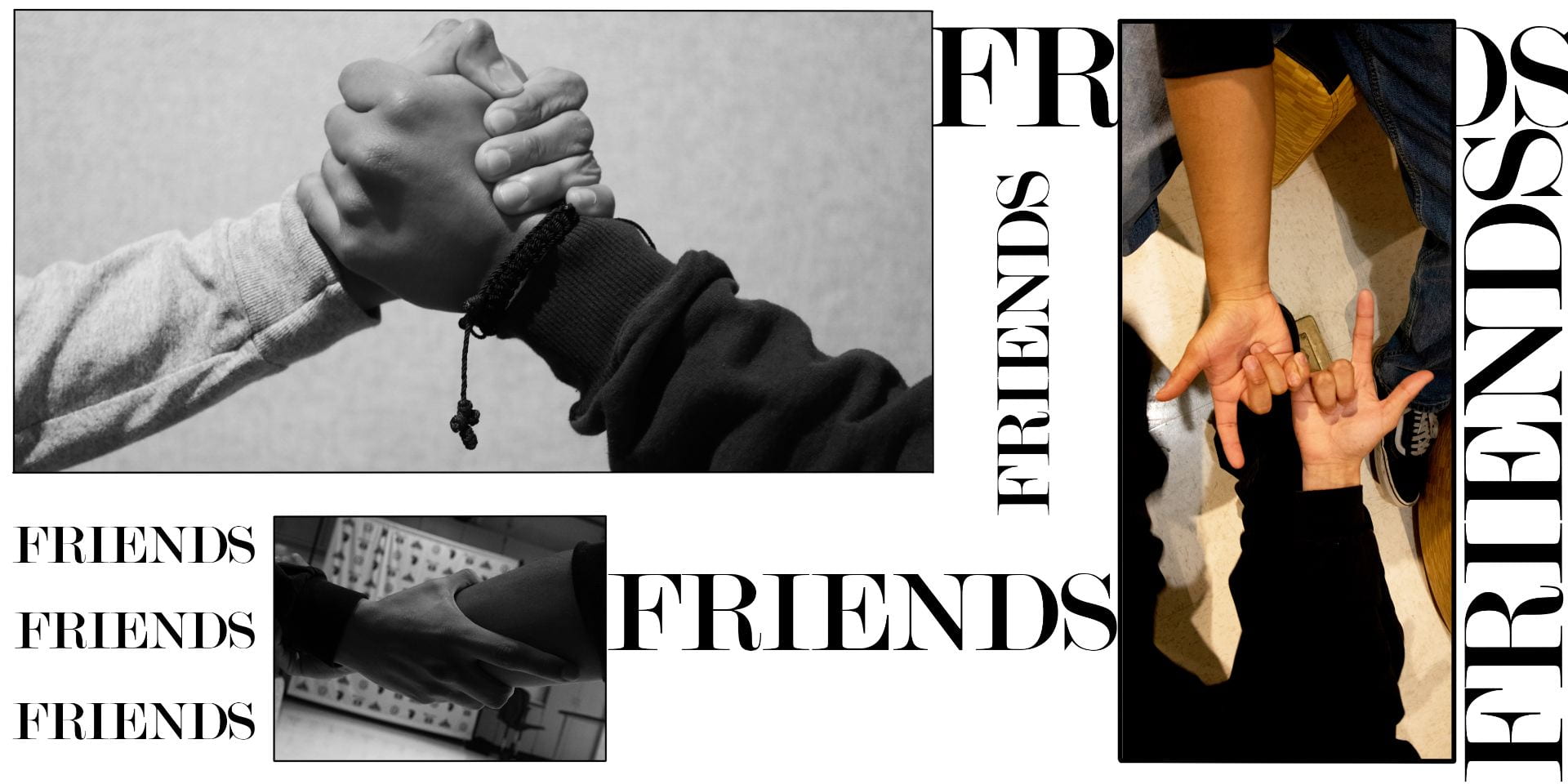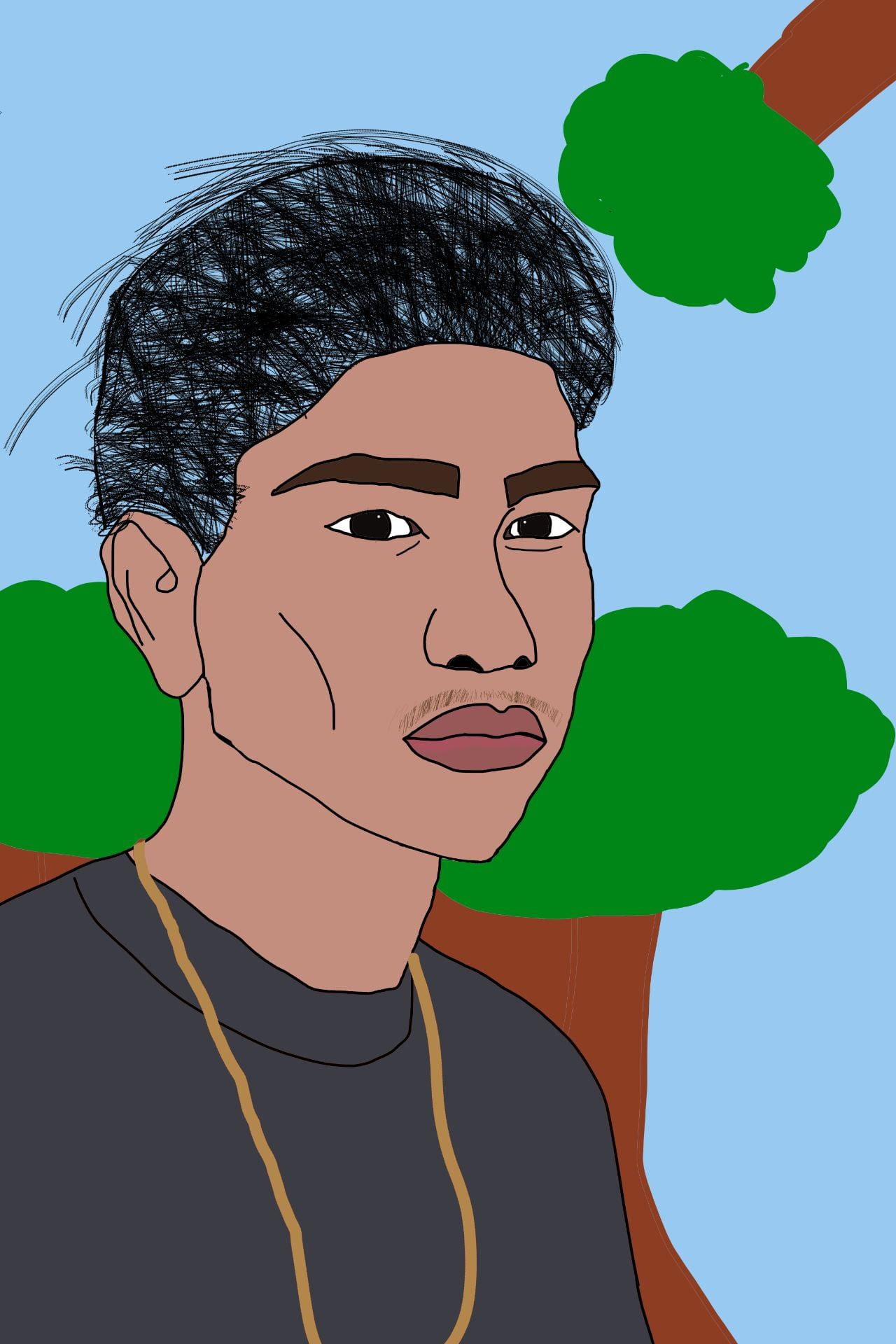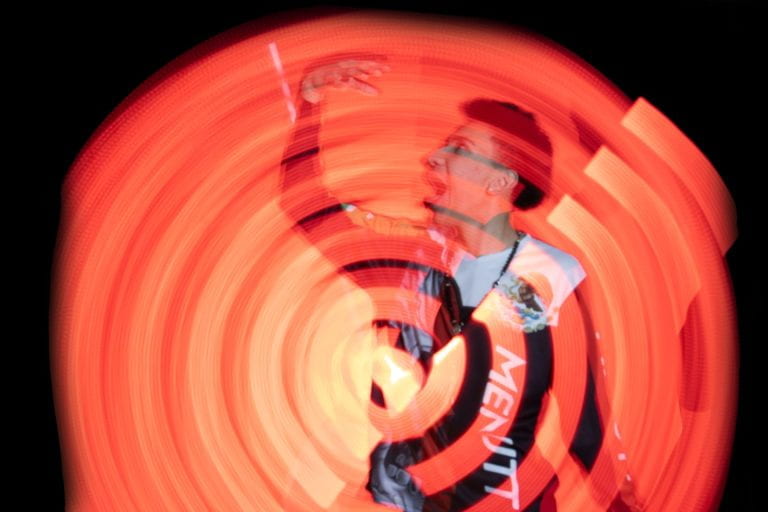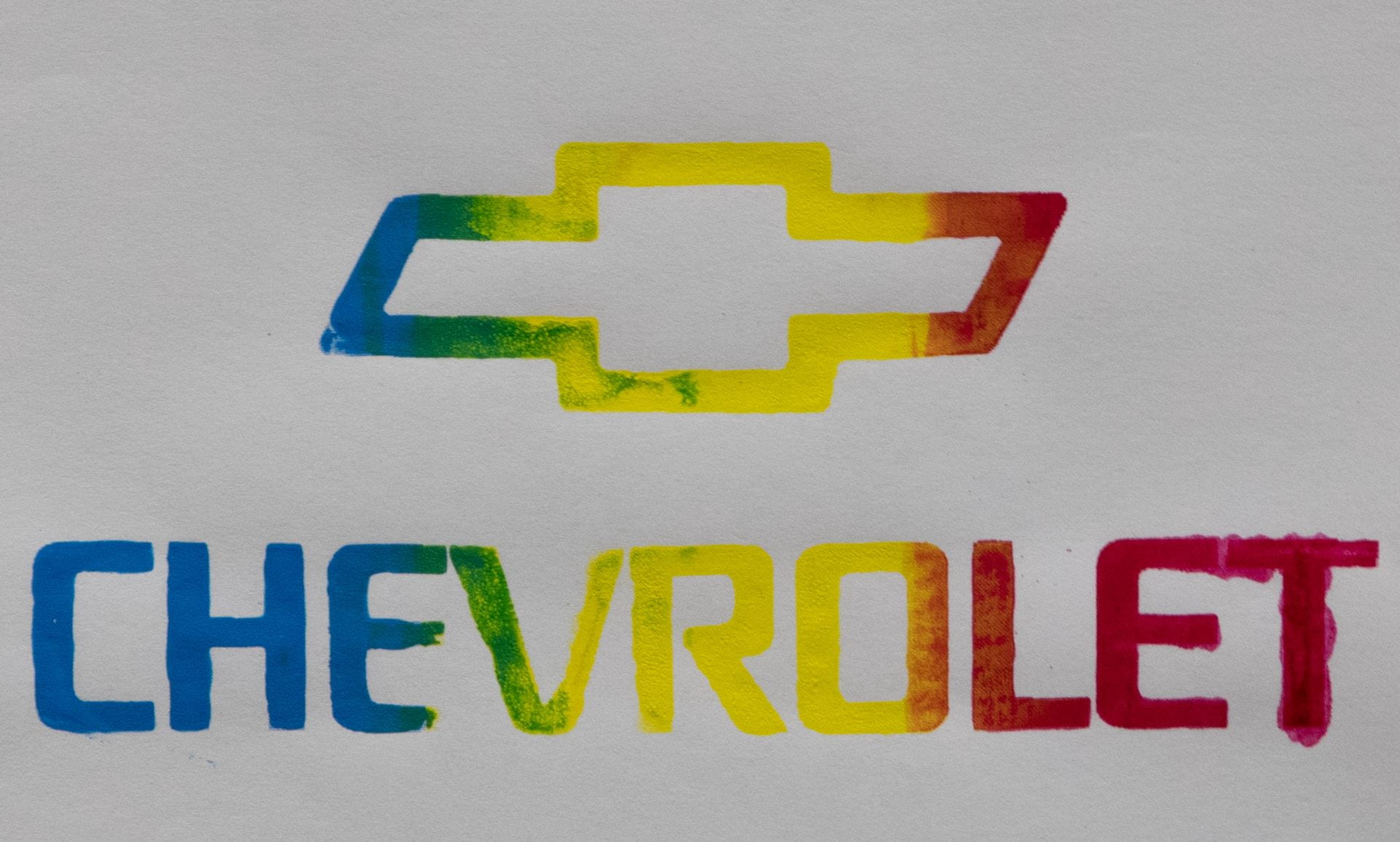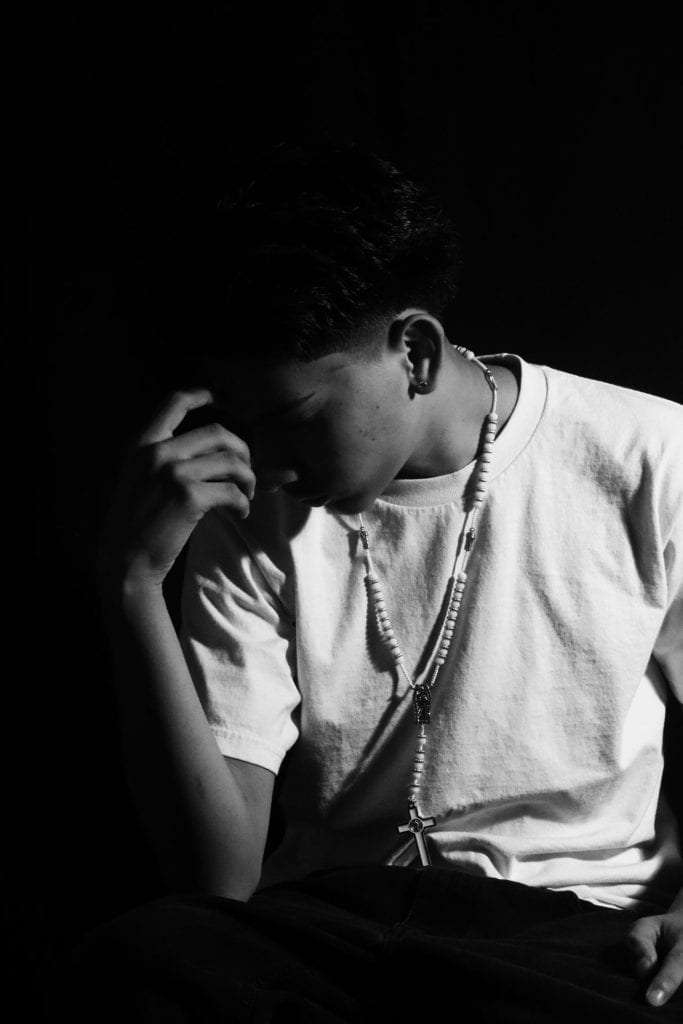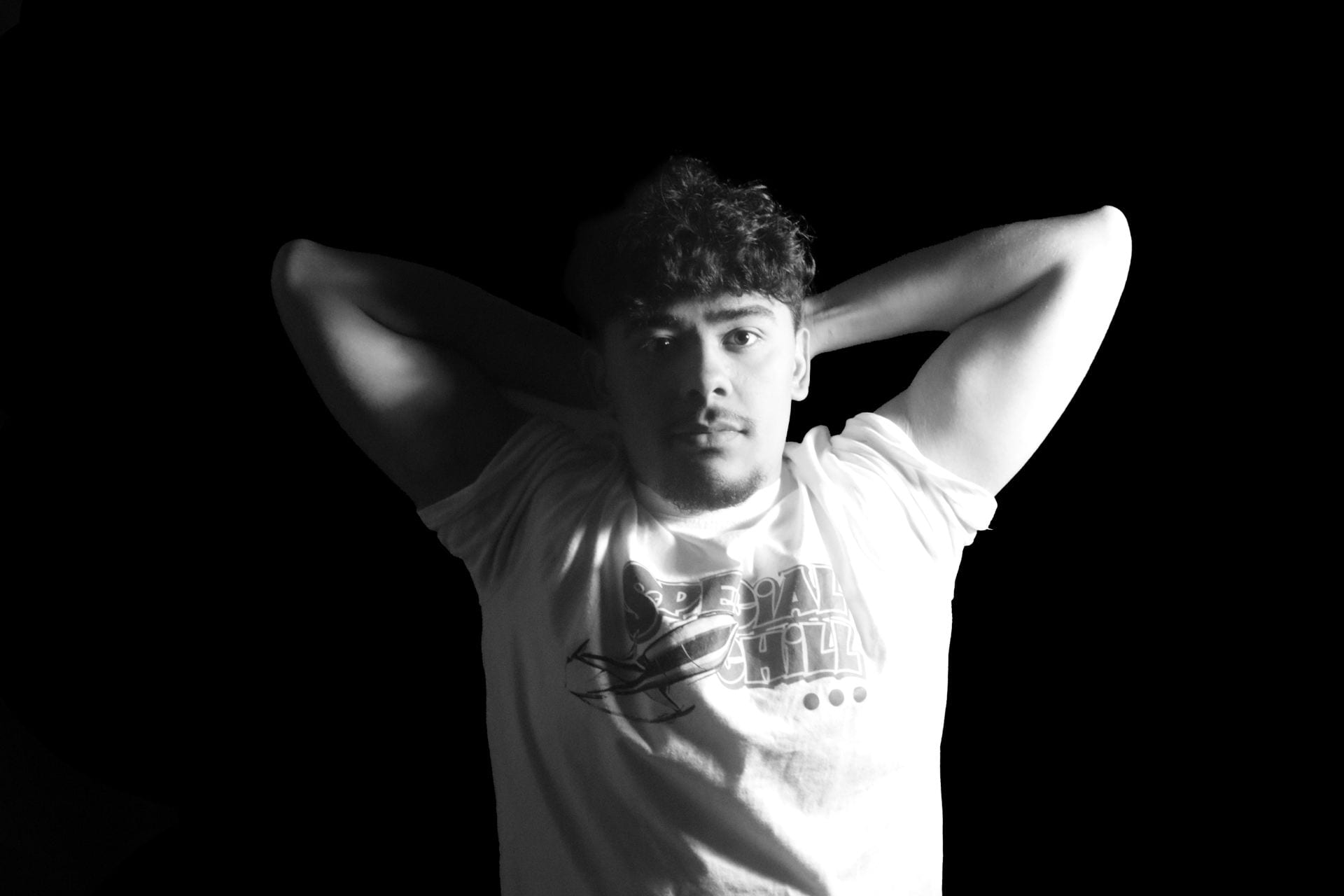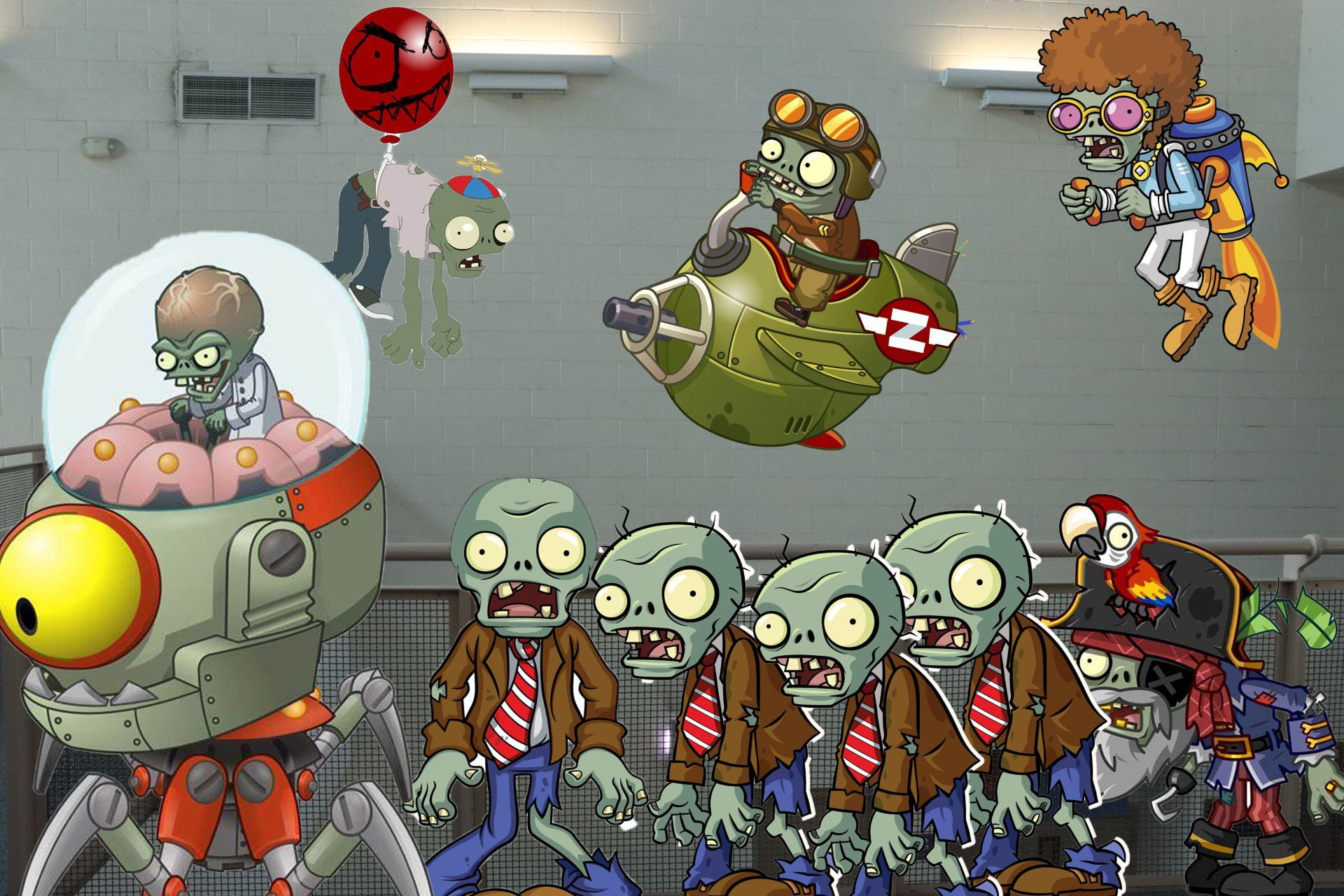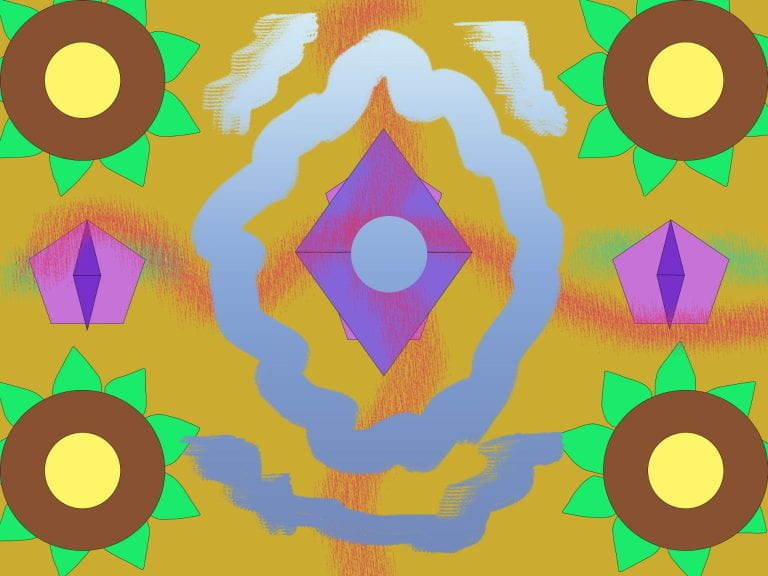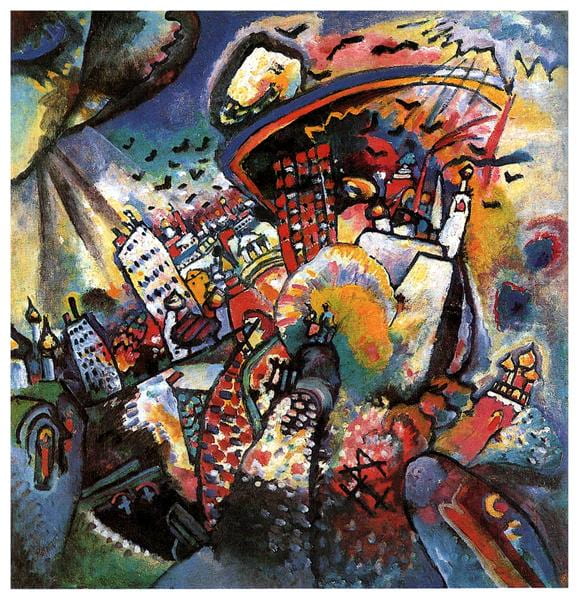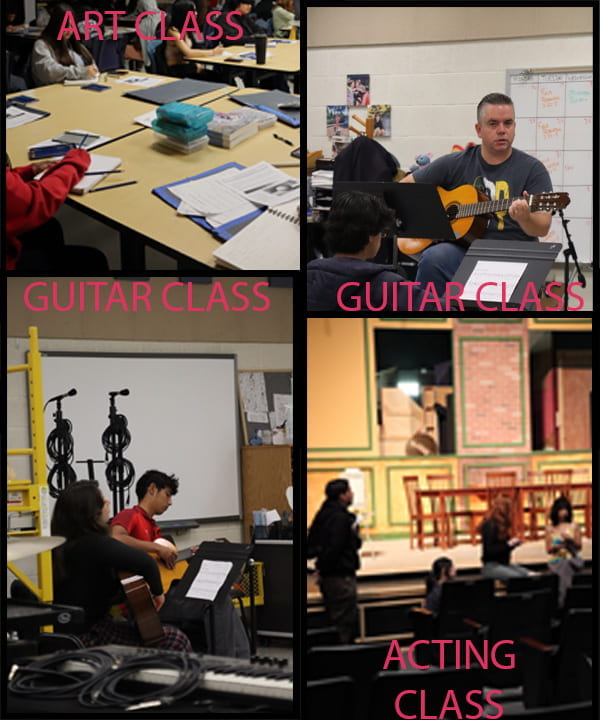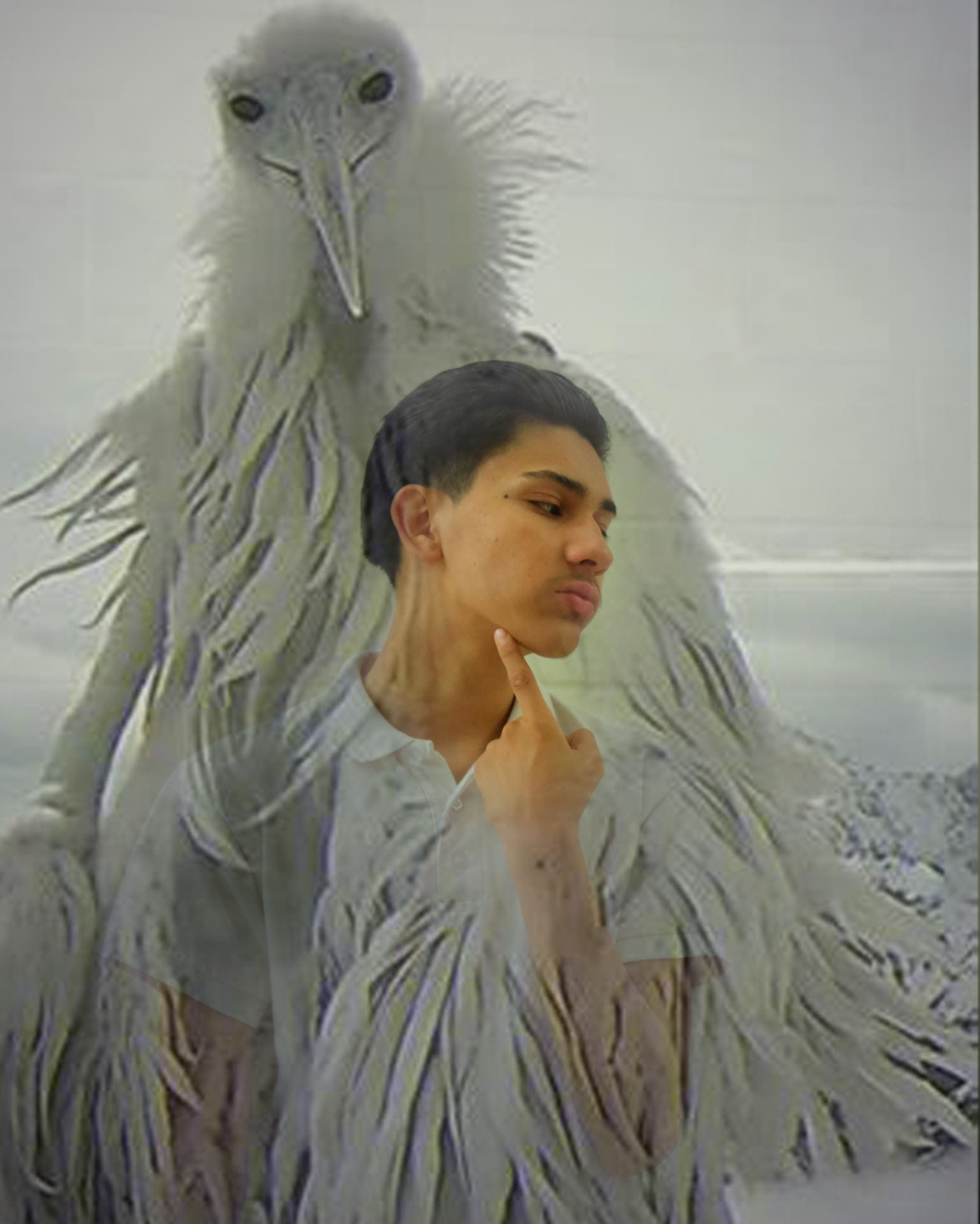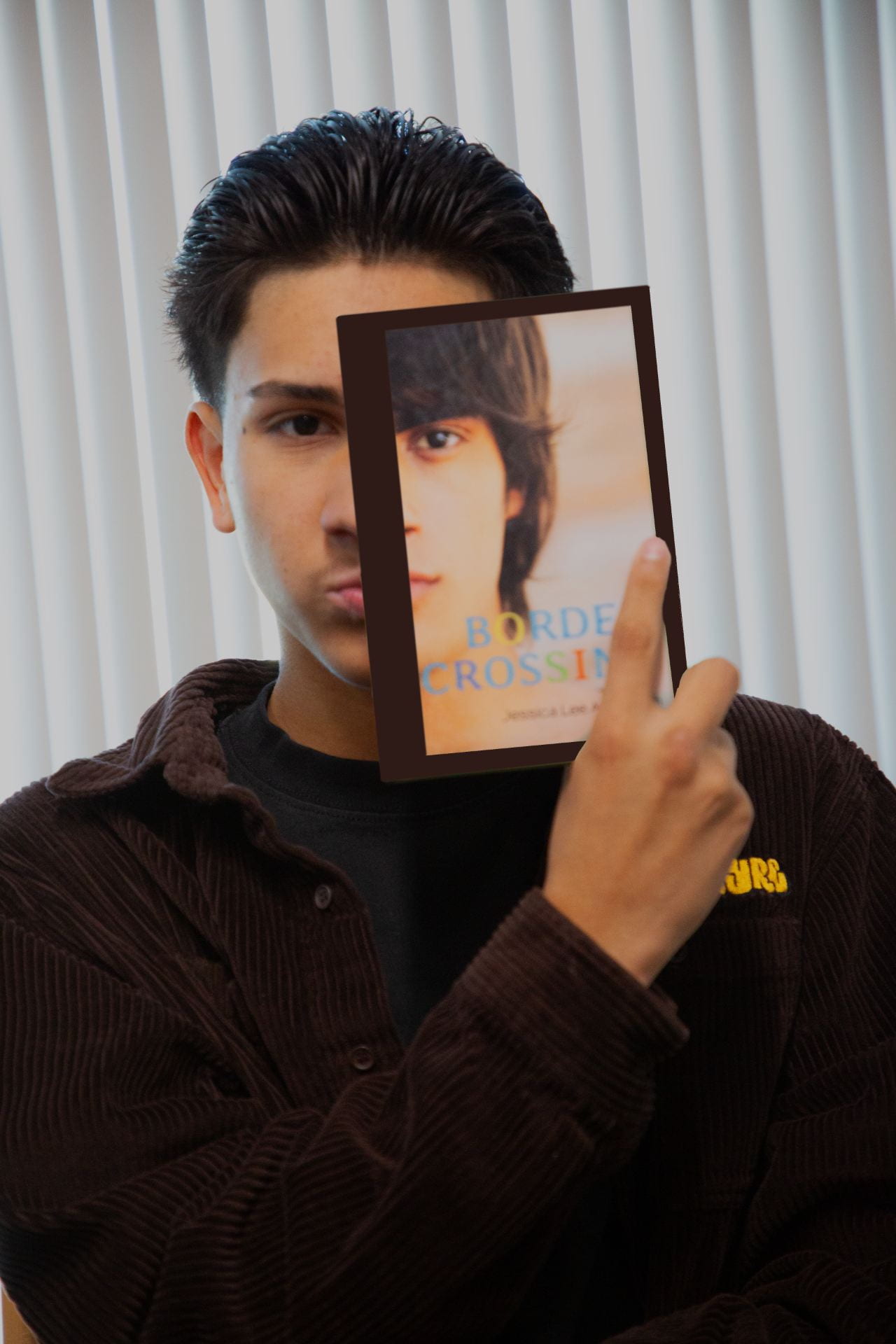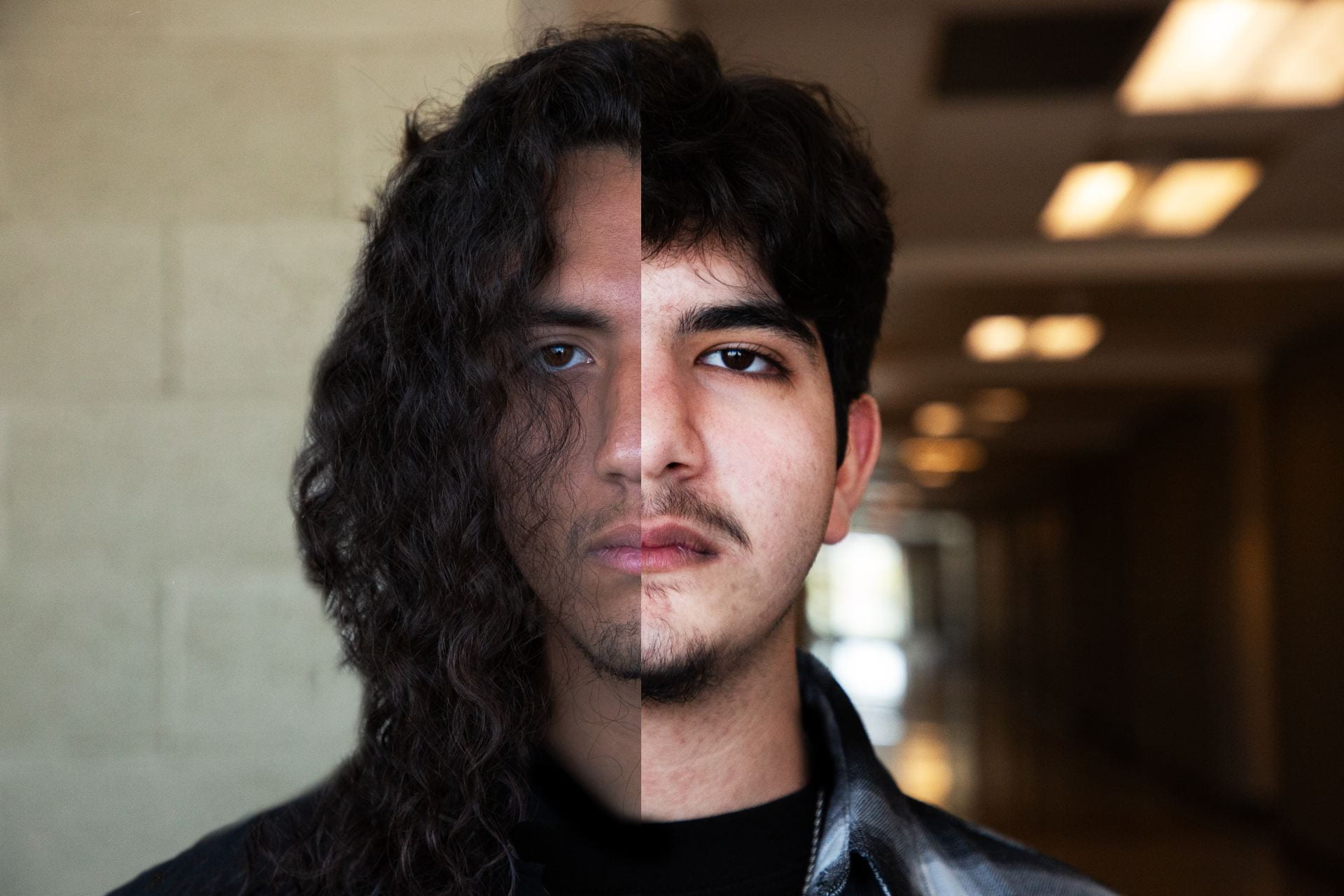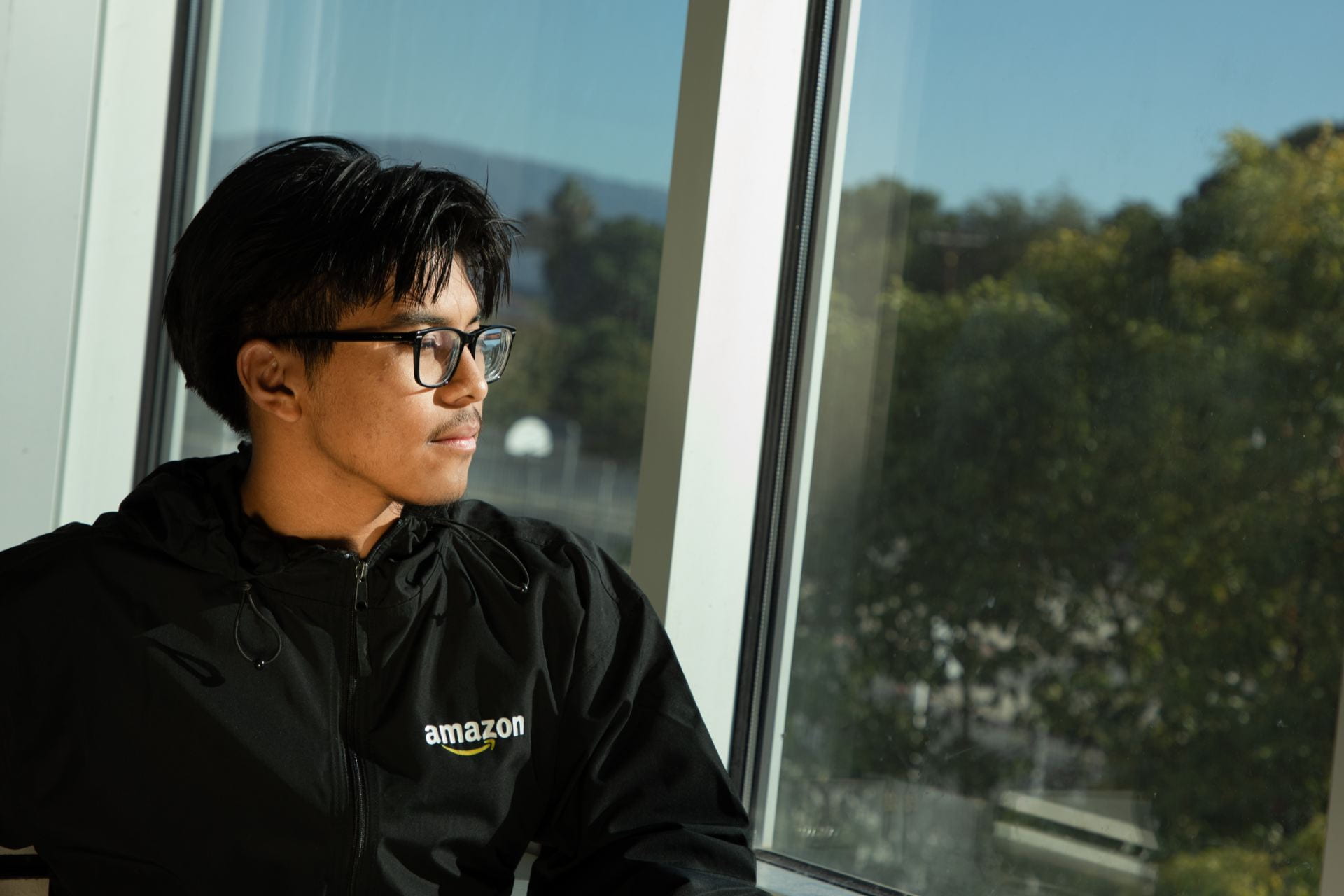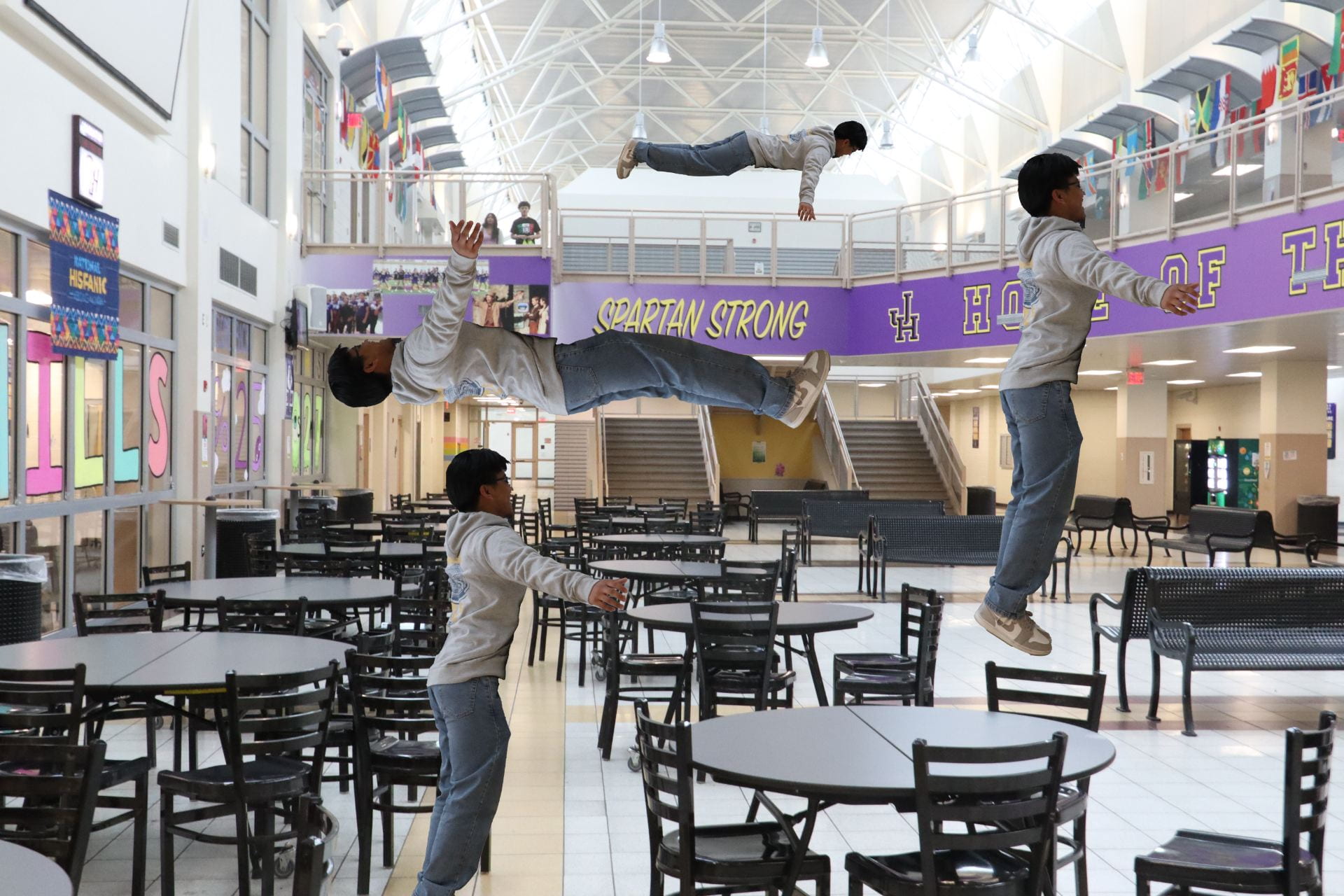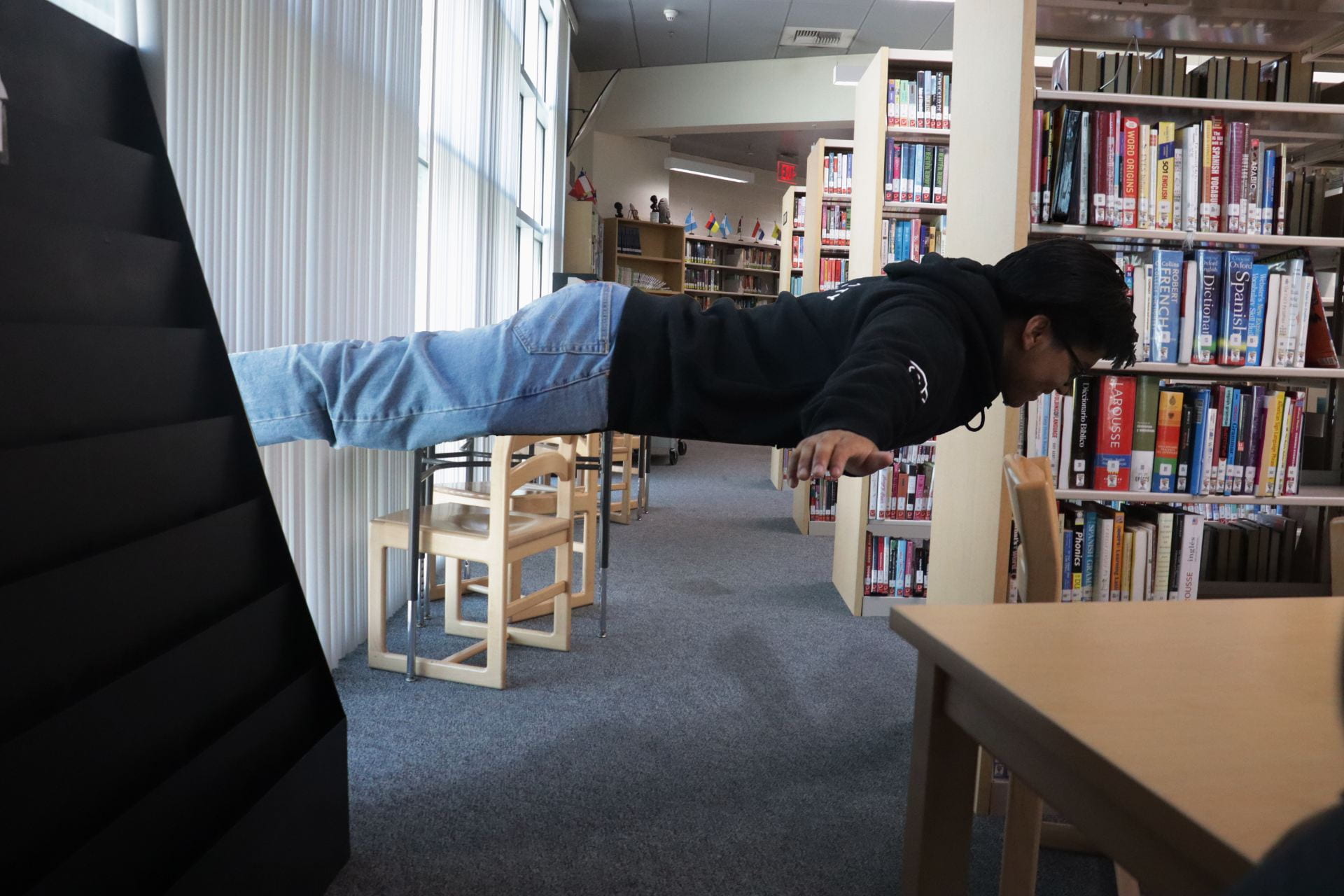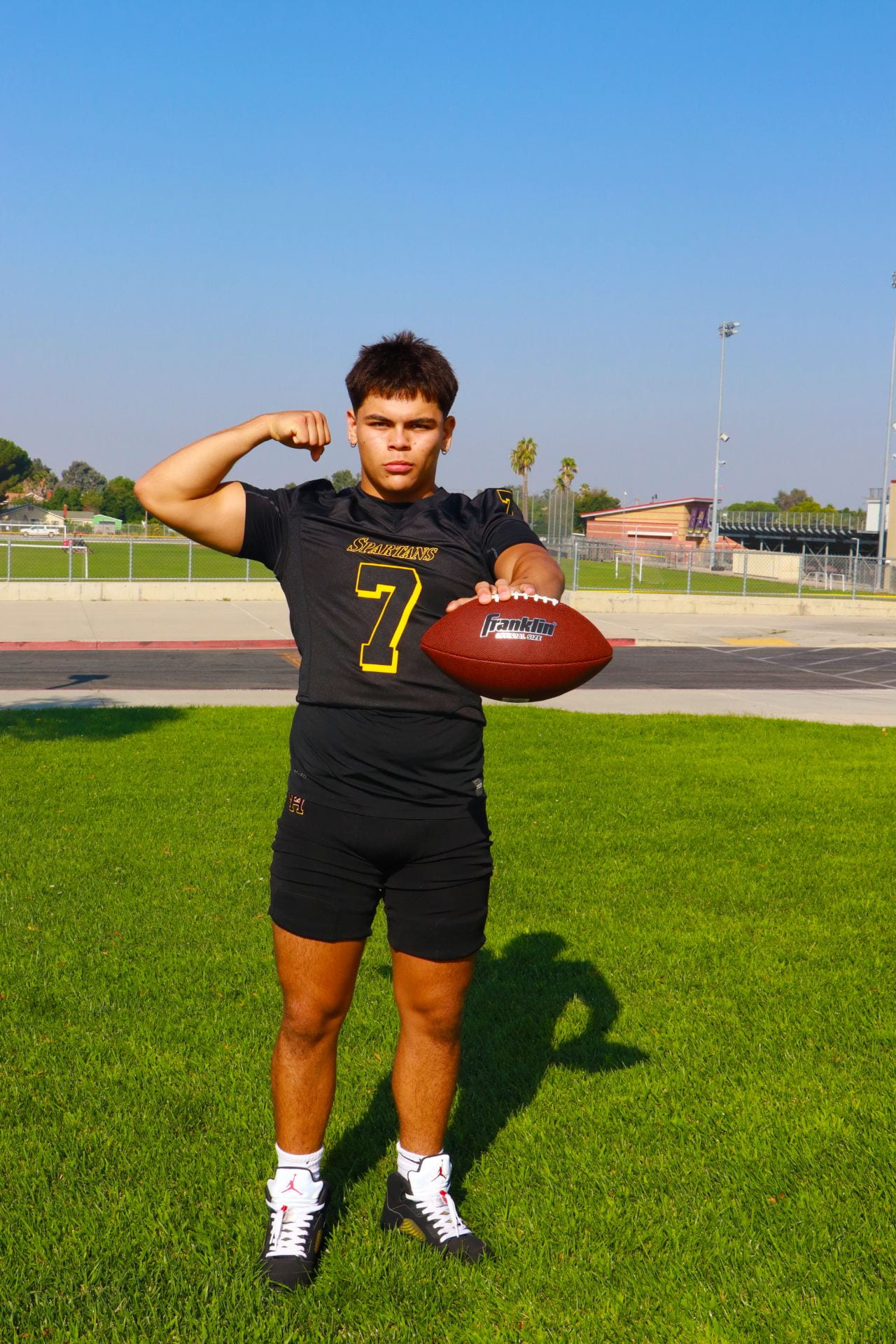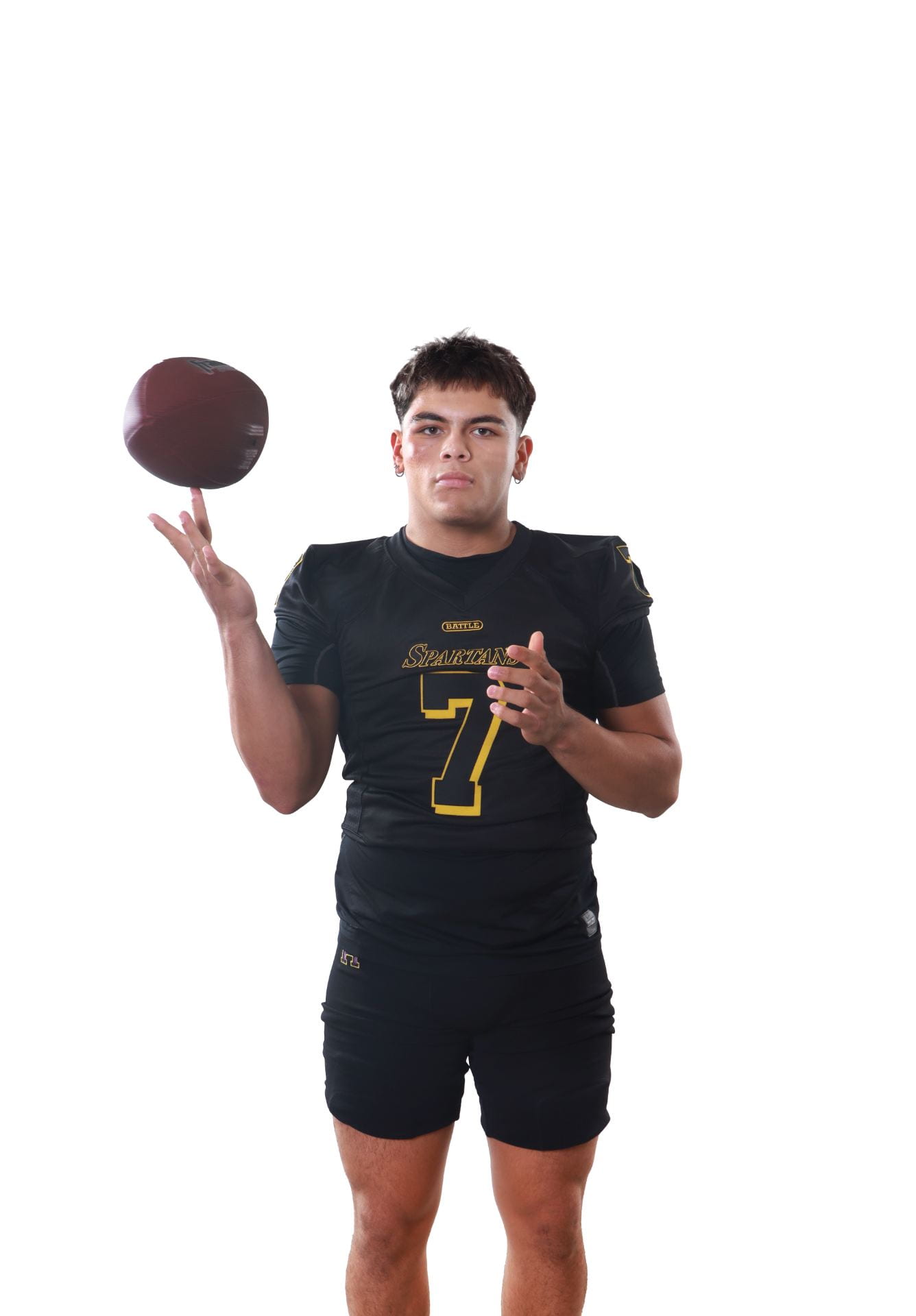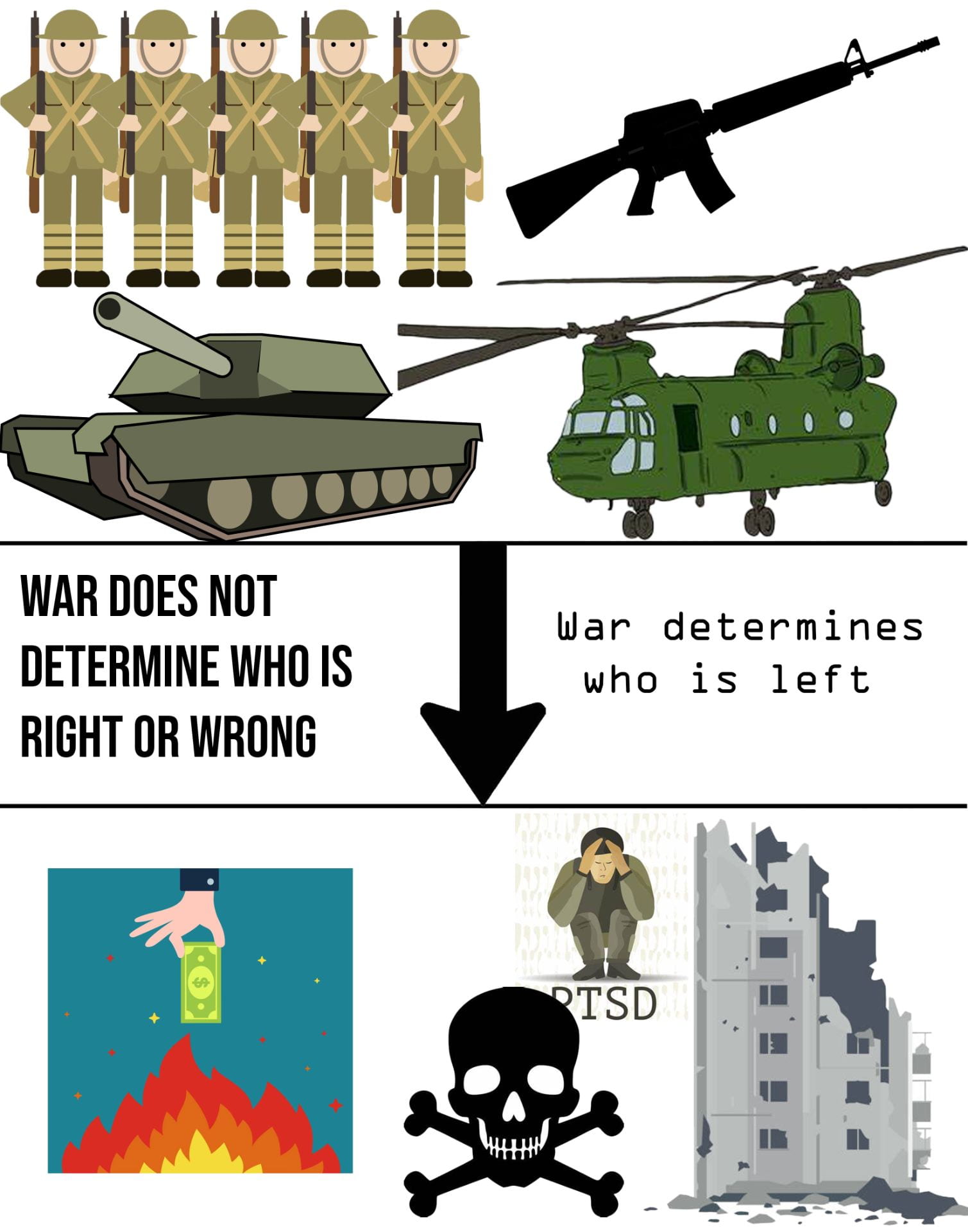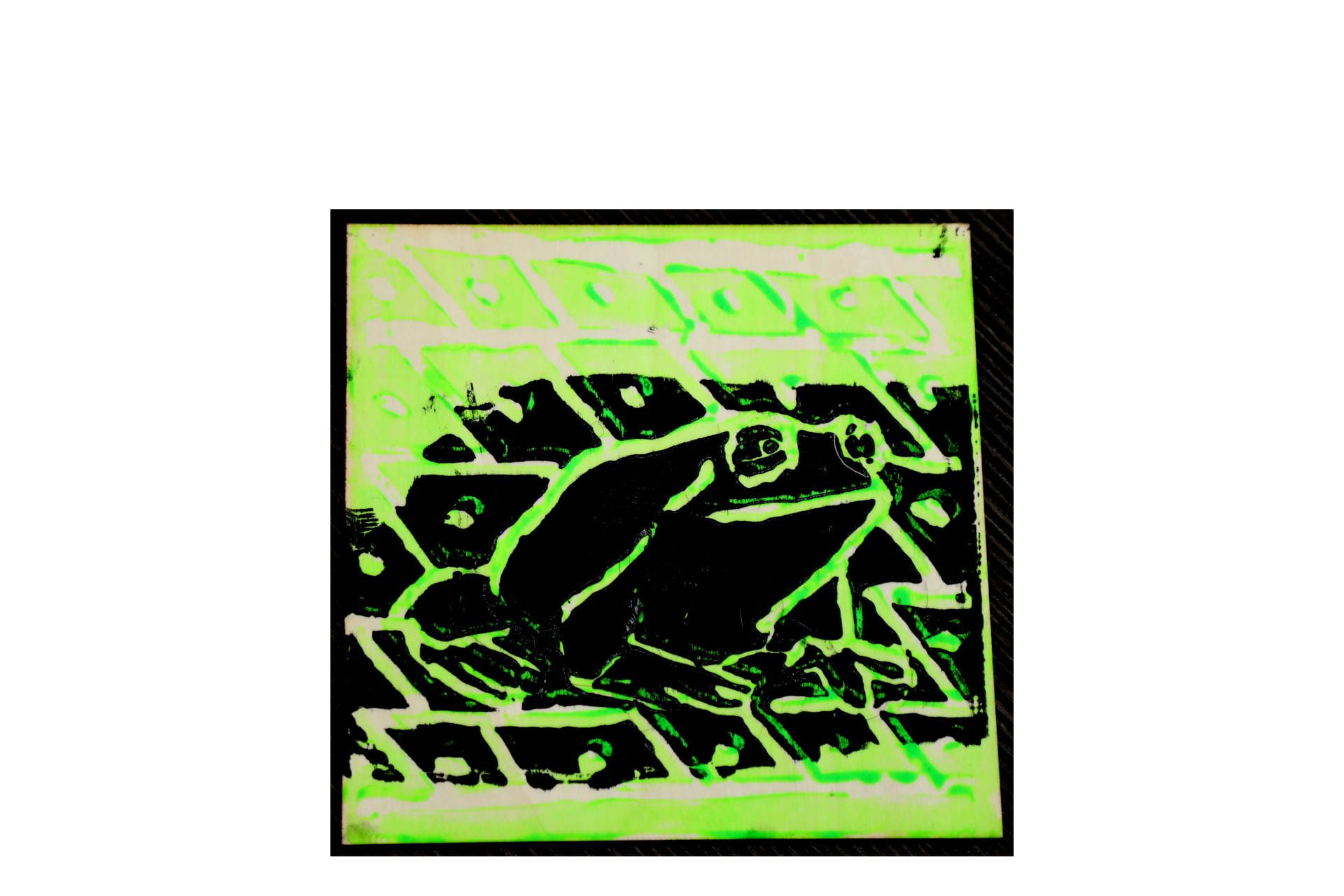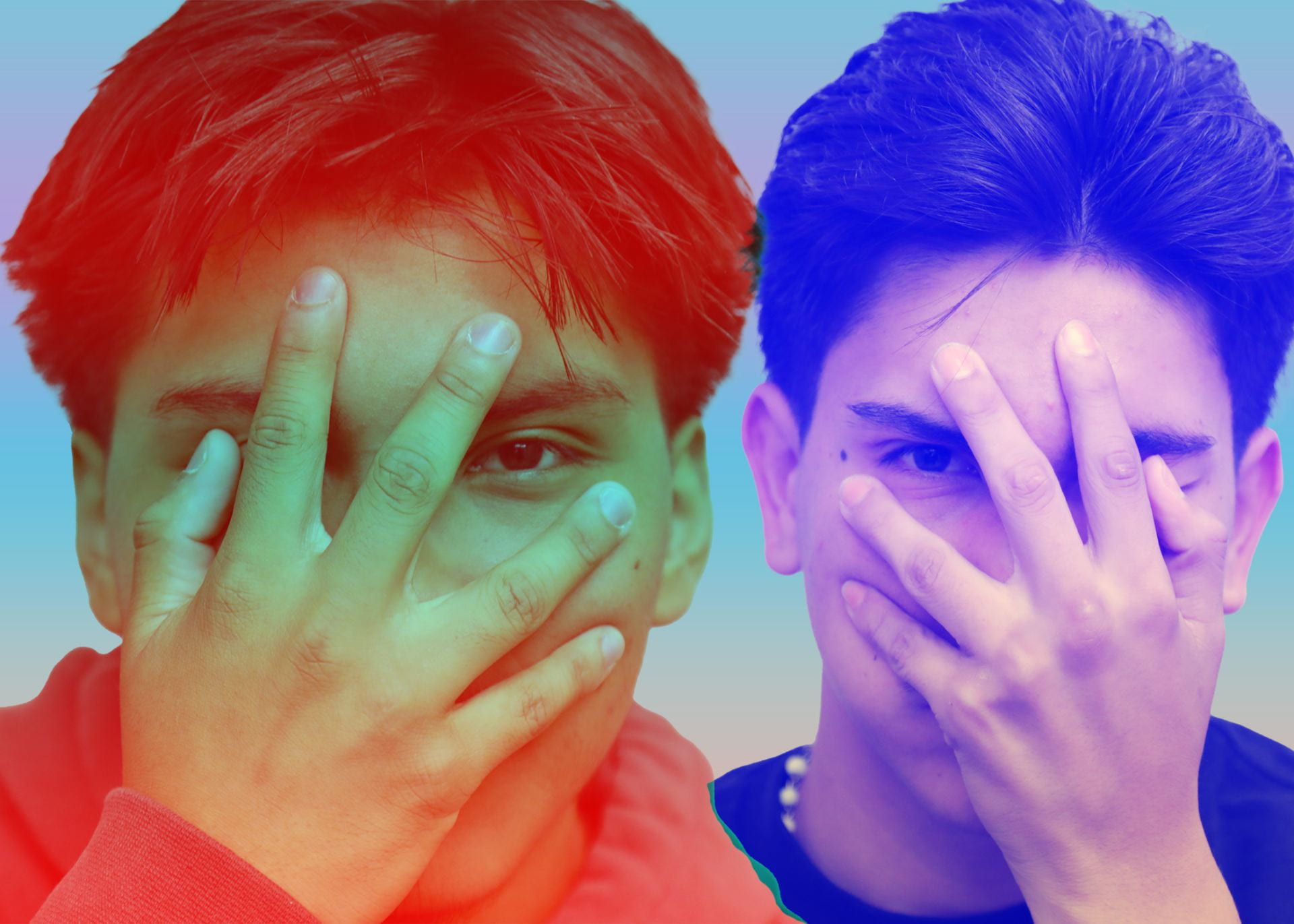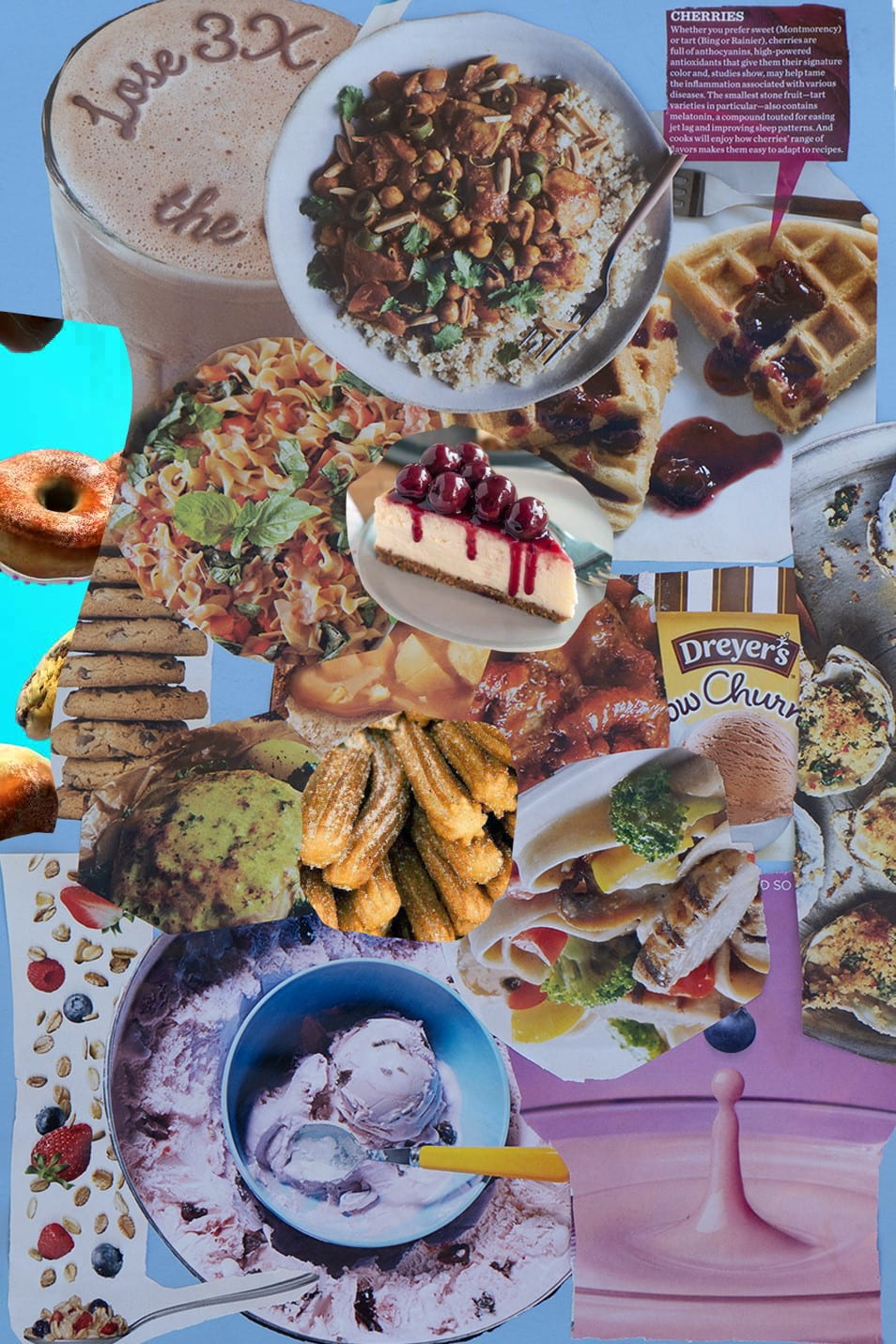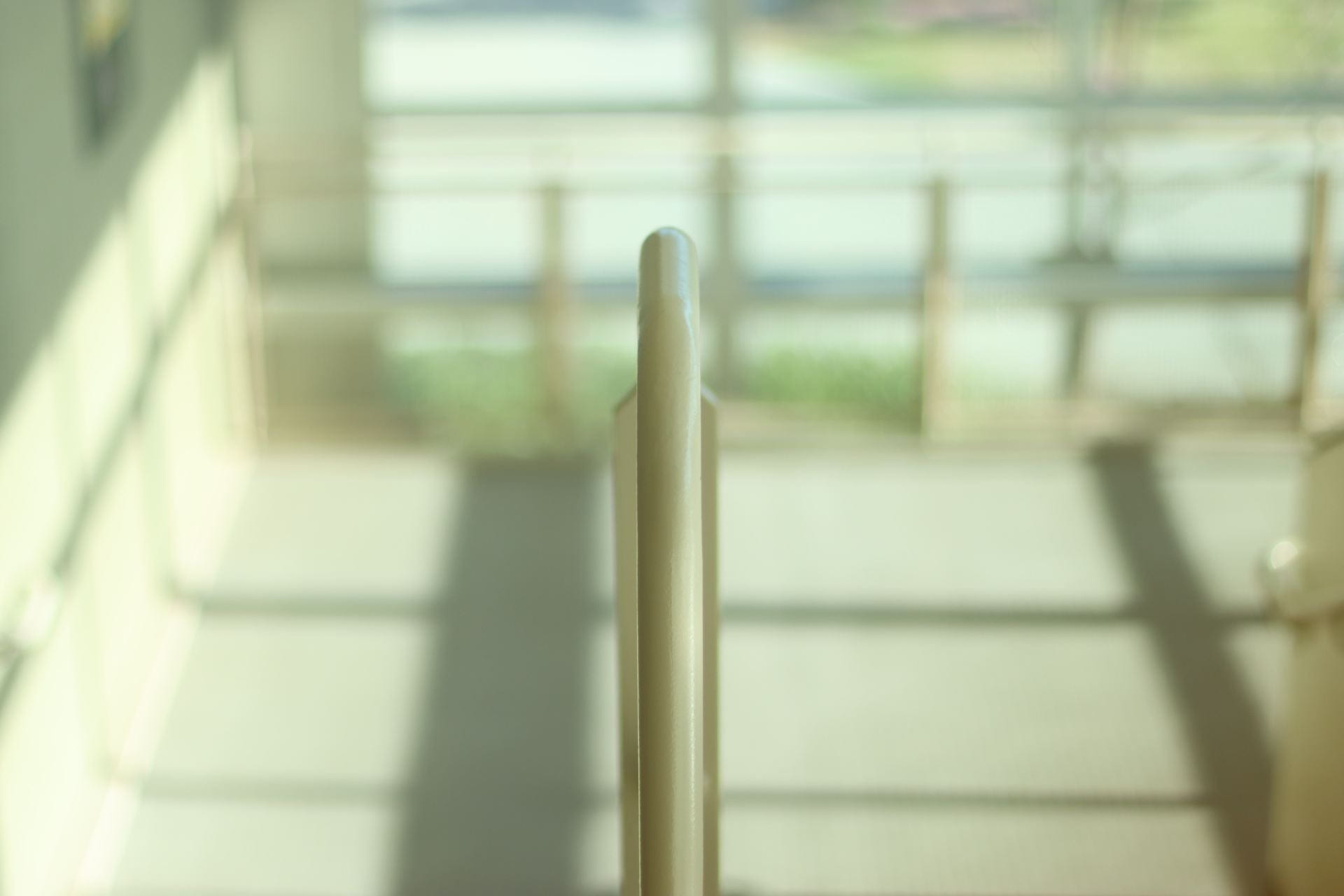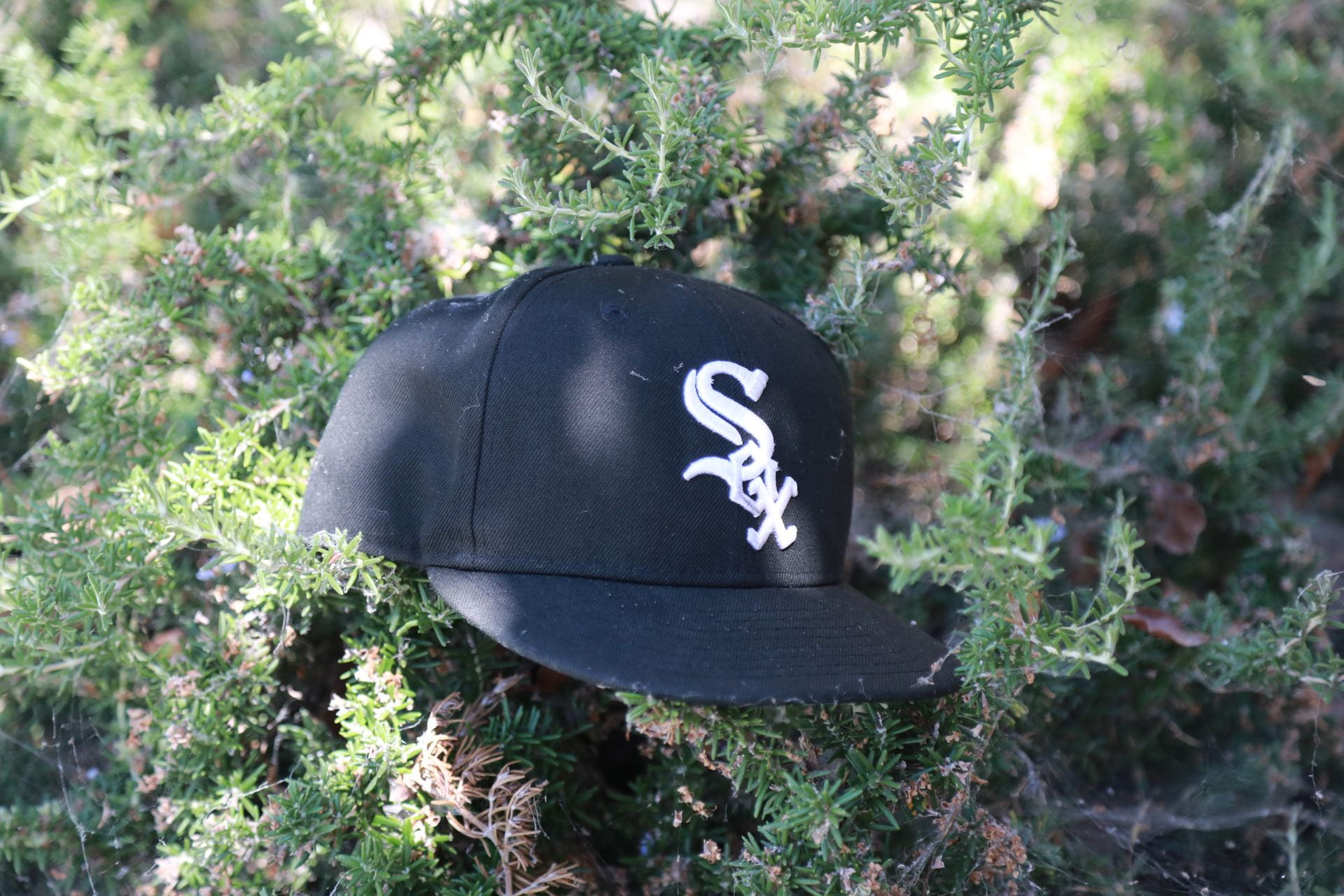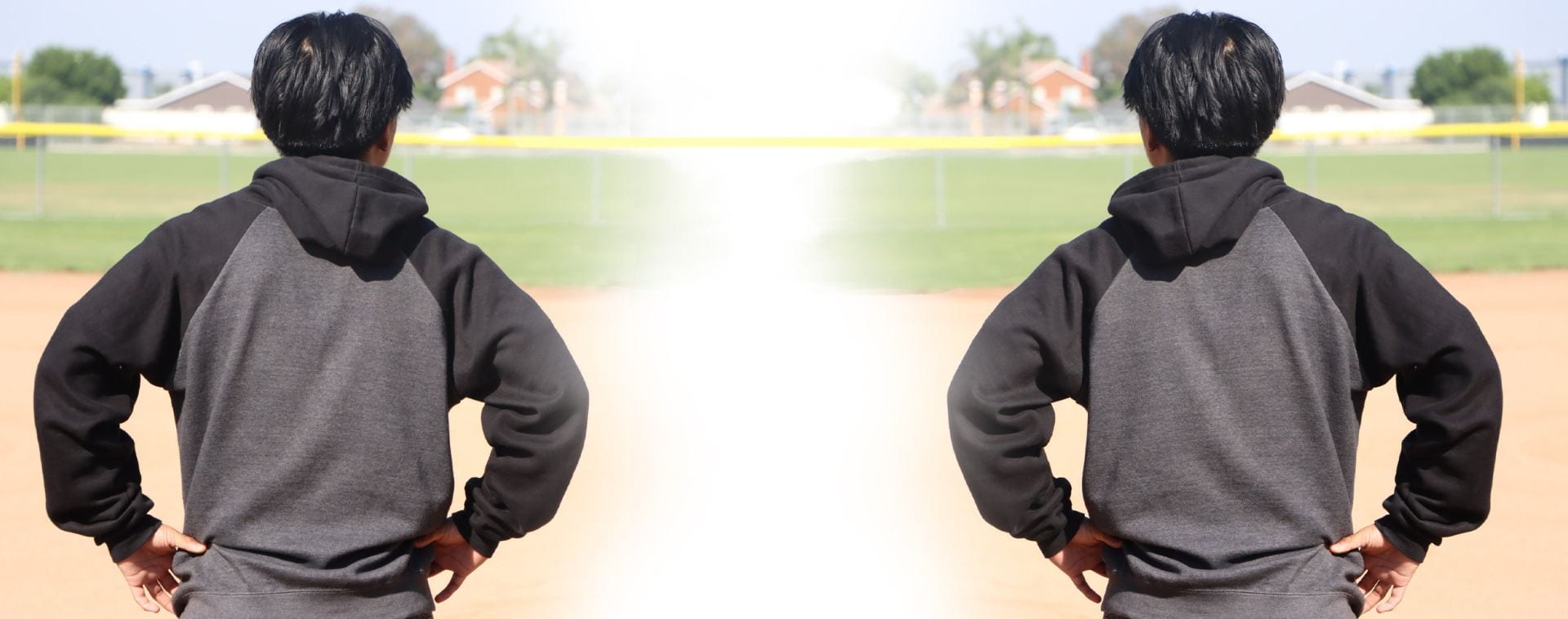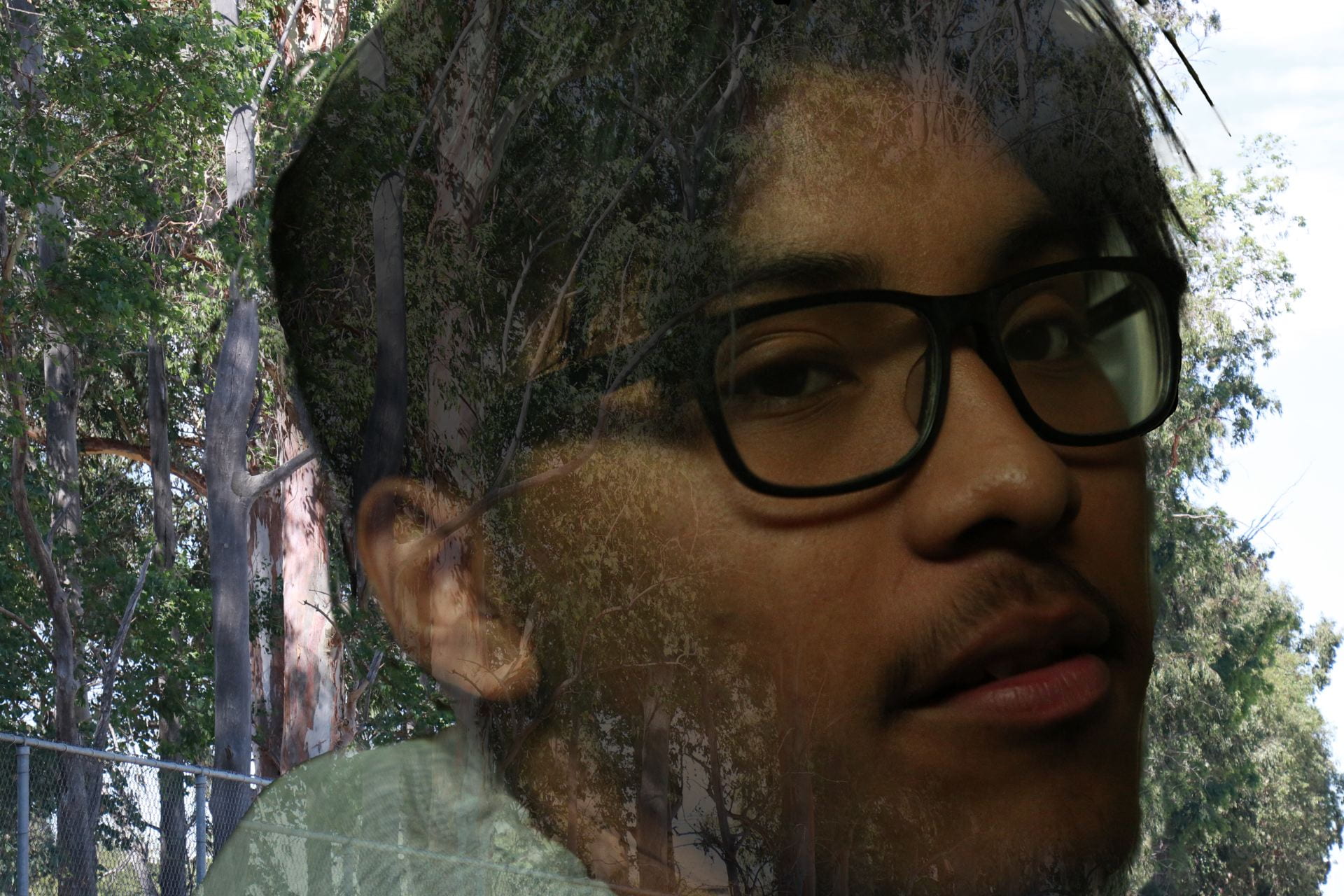Graduation Cover Design
Hand and Face Montage (Philip and Mathew)
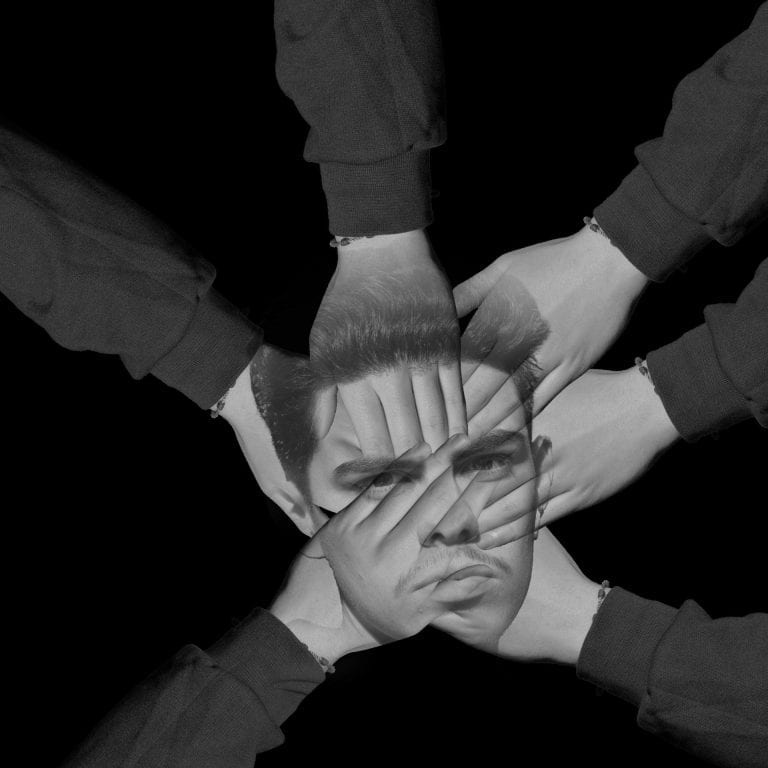
Logo for CTE Photography
Re-Create a Photo
Bodyscape
Emotion Series
Touch Series
Lay Flat Still Life
Cheerleader Pictures (Valentine Day Card Replacement)
Replacement for Video
Self Portrait
Macro Close Up
Light Painting Port
What its Your Mind?
Screen Printing
Screen Printing Process
- Find an image or use your own image to print. Print your image on a transparent piece of paper or film. Make sure the image is pure black and white.
- Apply a light reactive emulsion and put the screen under bright light for 24hrs.
- After 24hrs clean off any unhardened solution with a wet towel or in the sink.
- Lay down you’re clothing or whatever you’re going to print it on flat on a flat surface.
- Put the screen on top of your item and press down hard. This requires 2 people.
- Add ink to the top of the screen and use a brush to spread it all on the screen.
- Let the product dry for some time and after taking off the screen you’re done.
Low Key Portrait
Inspired by “Back of Marie’s No.4”
Style of Sandy Skolund
Sandy Skoglund created images using multiple of the same props. She did all this before editing so everything took time to do. I really like her work because it in a way makes things look creepy but great at the same time.
STYLE OF WASSILY KANDISKY
I really like Kandisky work because of how bright it could be. This photo shows a whole city in a completely different way while still being able to capture it. The color Kandisky uses makes statements and show us her position on things.
Resume
CTE Classes
Career Tree
- I’m very interested in real estate photography.
- These photographers usually set up homes and take photos of them so that agent can post and try to sell the house and they try to show the house as best as possible.
- Real estate photographers make around $40,000 a year.
- I’m real interested in this field because I like real estate and photography. So, both of them together makes it a good job.
- I would need to mainly study photography and know a bit about real estate itself.
Self Portrait Blended Imagery
Book face series
Diptych
Indeed Job Search
- One job I found which I would be interested in is a Vehicle Photographer. To qualify you must have a diploma and a drivers license which are two things I don’t have yet. For this job you need to be able to sit and stand for prolonged periods of time. You also need to have good vision close and far. I would want this job because I personally really like cars and photographing them would be cool.
- The second job is a Curator of Photography. To qualify you need to have MA in art or history with experience in working with a museum for a minimum of 5 years. You need to be able to develop and collaboratively project manage exhibitions at all levels. You also need to show lots of leadership skills. I would want to work here because working in a environment like this and having the responsibilities to do cool things like this sound very interesting and engaging.
- My final job which interest me is a Social Media Content Creator. To qualify for this position all you really need is to know how to run a business social media account and know how to record the brand and make it appealing to customers. This job will need me to know how to de deep google analytics to discover new trends to attract consumers. I also need to know how to use adobe photoshop to edit pictures and photographs. I would like to work in this position because I enjoy editing photos and posting to social media so I can just do that but for another company and for money.
Reflecting Light (Painting Substitute)
Levitation
Football Player
Political Poster
When war is in place nothing is being accomplished. All it is is rich, mad, and high in power men sending their own people to die for them. They don’t think for a second what they are doing to the men on either side. It leaves people empty and lifeless and should end all war.
Block
Double color exposure
Differences
JPEG or Joint Photographic Experts Group is the most commonly used file format. It compresses the photo to make it smaller typically a 10:1 compression. JPEG works best for photography photos and paintings of realistic scenes. PNG or Portable Network Graphic is popular with web designers as it handles graphics with transparent backgrounds. Similar to JPEG but is compressed with lossless compression and instead supports transparency. TIFF or Tag Image File Format is a computer file used to store raster graphics and image information. Mainly used to store high quality images before editing them to avoid lossy file formats. They are larger than Jpeg and Png and have better image quality than JPEG. GIF is a raster file format that supports 256 indexed colors and images to be combined for animations. Different than the formats mentioned before because it has moving animations. RAW or digital negative is a format that contains uncompressed, raw image data that can be adjusted. They are used for storing unaltered image data and store the largest amount of detail out of any raster file type.
Collage
Depth Of Field
Triptych
Mirror
Man and Nature
Camera Questions
- Aperture or f-stops is how wide or closed your opening of your camera is. Higher f-stop means smaller opening. Shutter speed is how fast your camera will open and close to take a photo. ISO is how sensitive your sensors are to light. Higher ISO will be more sensitive to light.
- You should change your ISO if you’re in a dark place or a too bright place.
- In AP mode your camera will vary the exposure setting depending on the aperture value you’ve set. This controls the depth of field. SP mode you control the shutter speed, and the other settings are set to auto based of that.
- The AF modes are One shot AF, Servo AF and AI Autofocus. You can change them on the dial of the camera.
- You need to meter the light in order to get a perfect exposure for everything.
- A normal lens is 50mm, wide angle is anything less than 50mm and a telephoto lens is anything over 50mm.
- White balance is the temperature of the color in the image. You should change this whenever the color looks bad because of the sources of light.
- Depth of field is how sharp your background is or blurred. Shallow is blurred background while good is a clear background.
- Manual, auto focus, aperture priority, shutter speed priority, tv mode, p mode.
- Exposure compensation is when you purposely underexpose or overexpose your image in order to get something else right.


